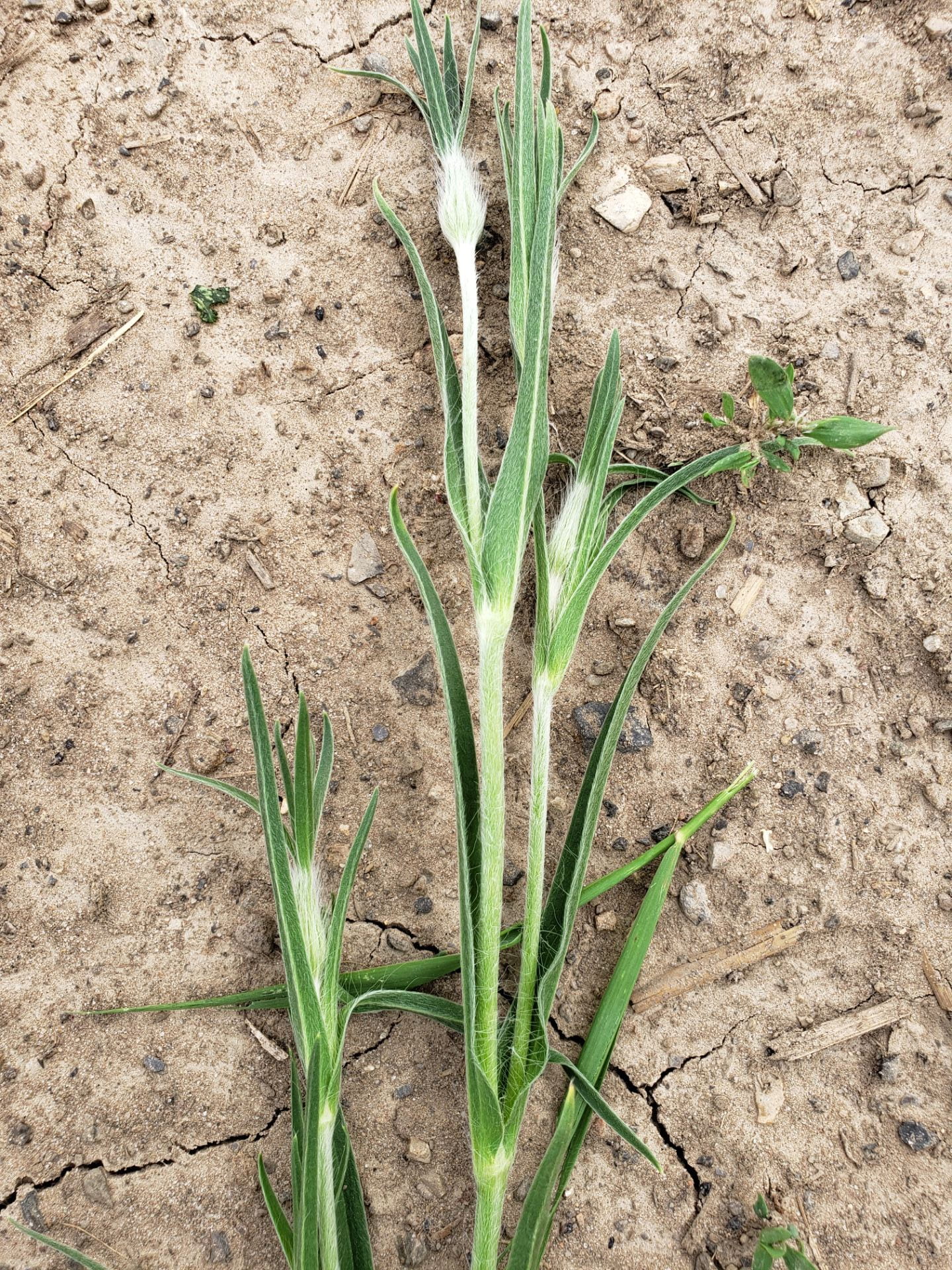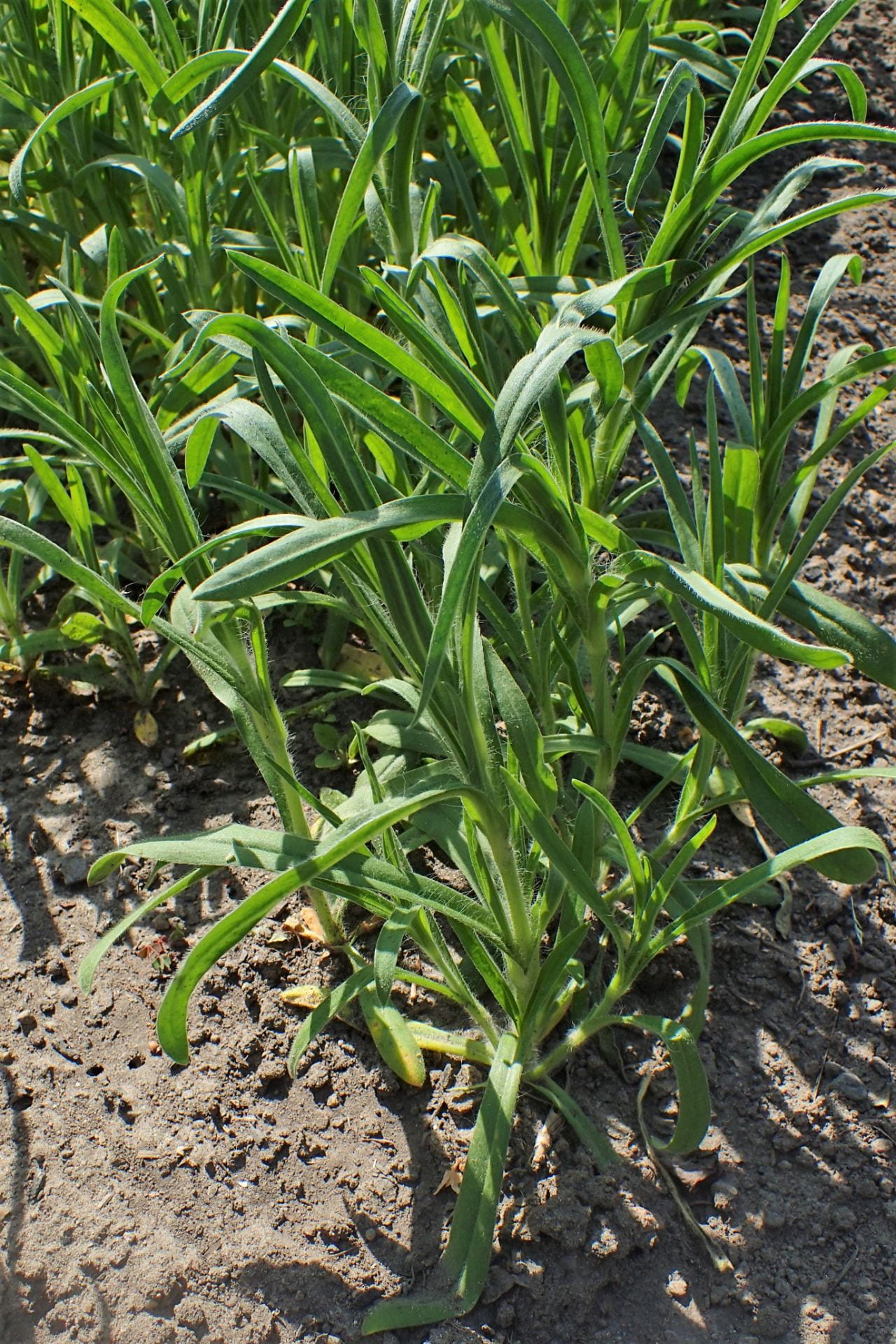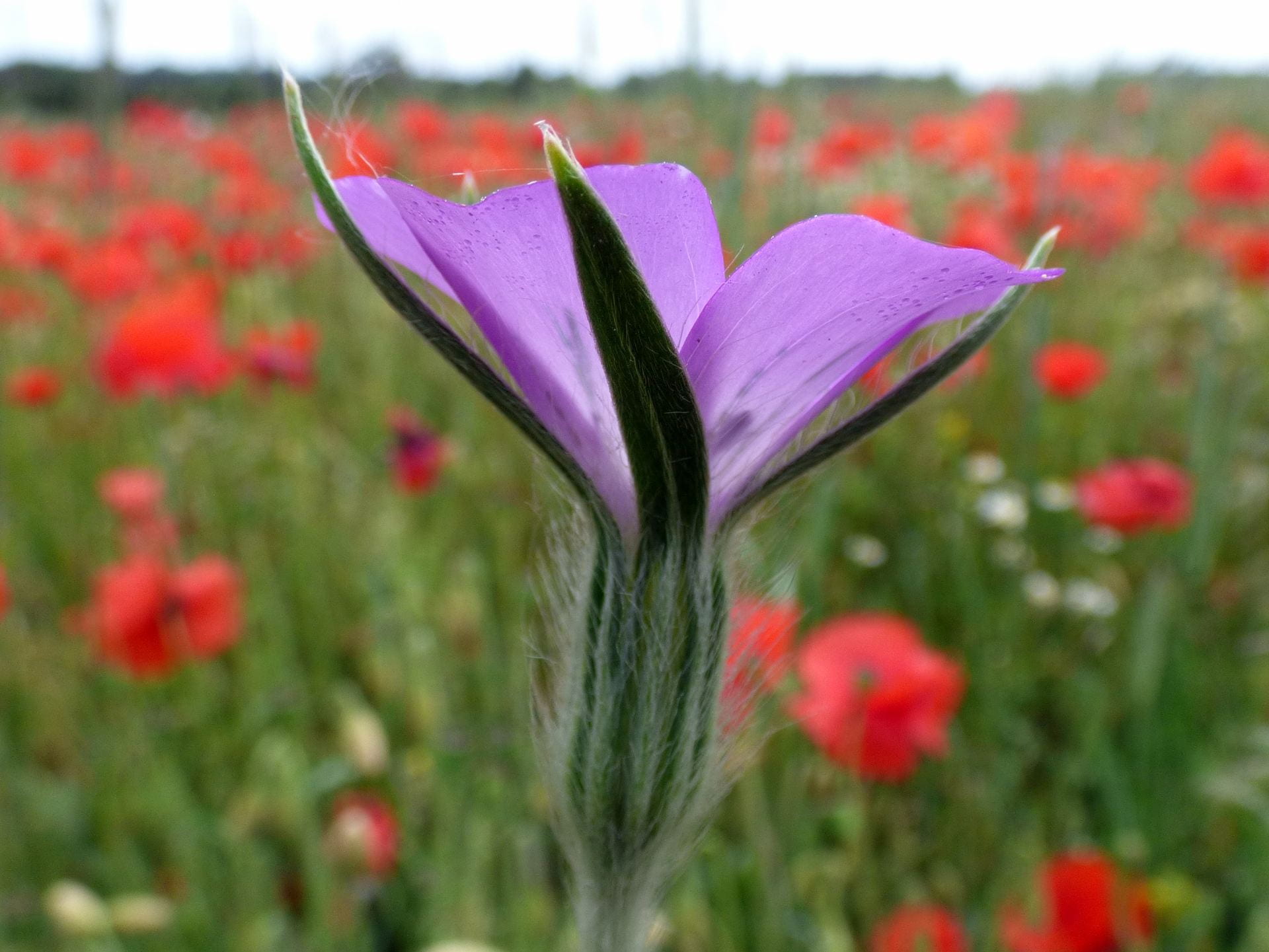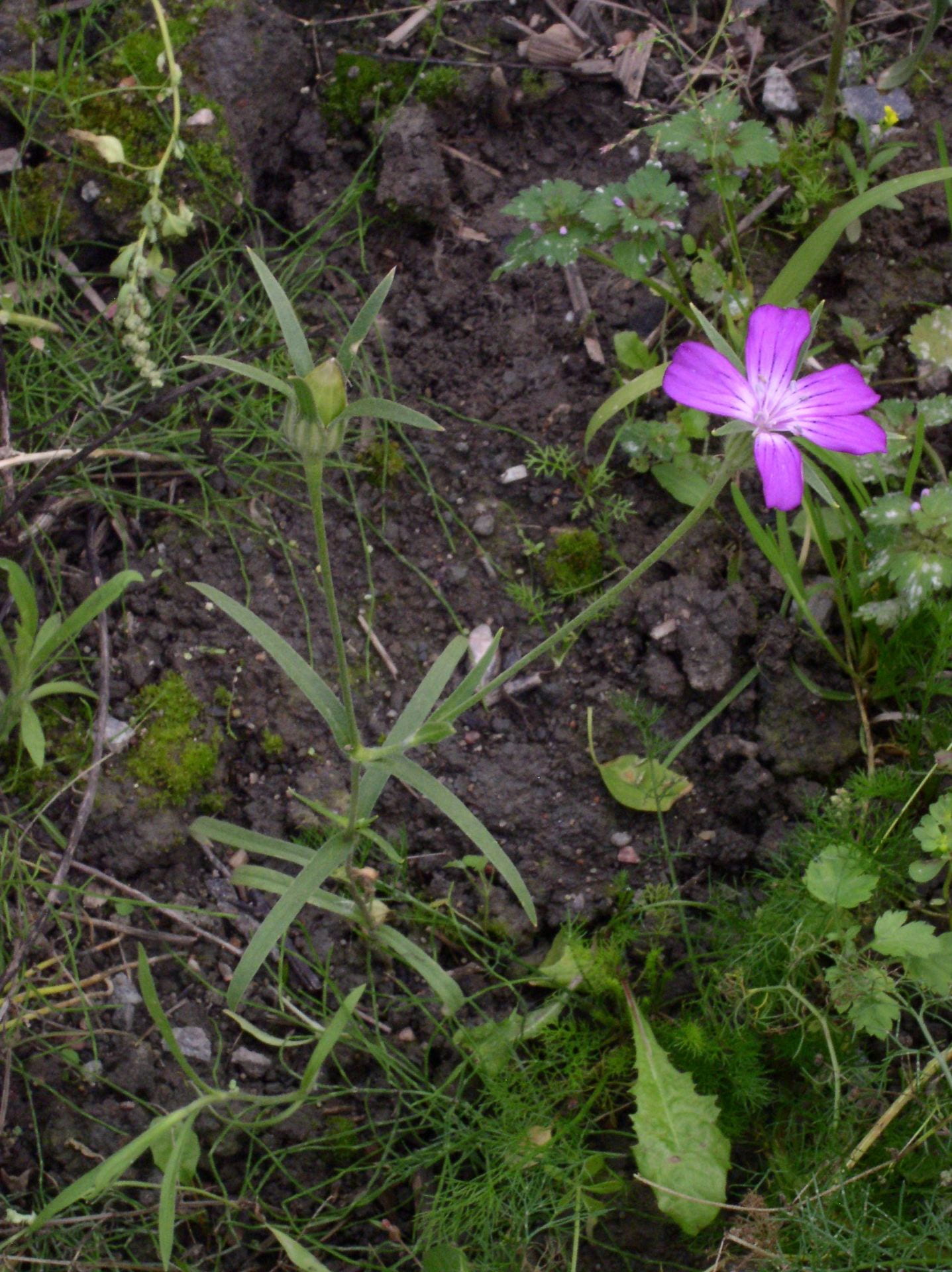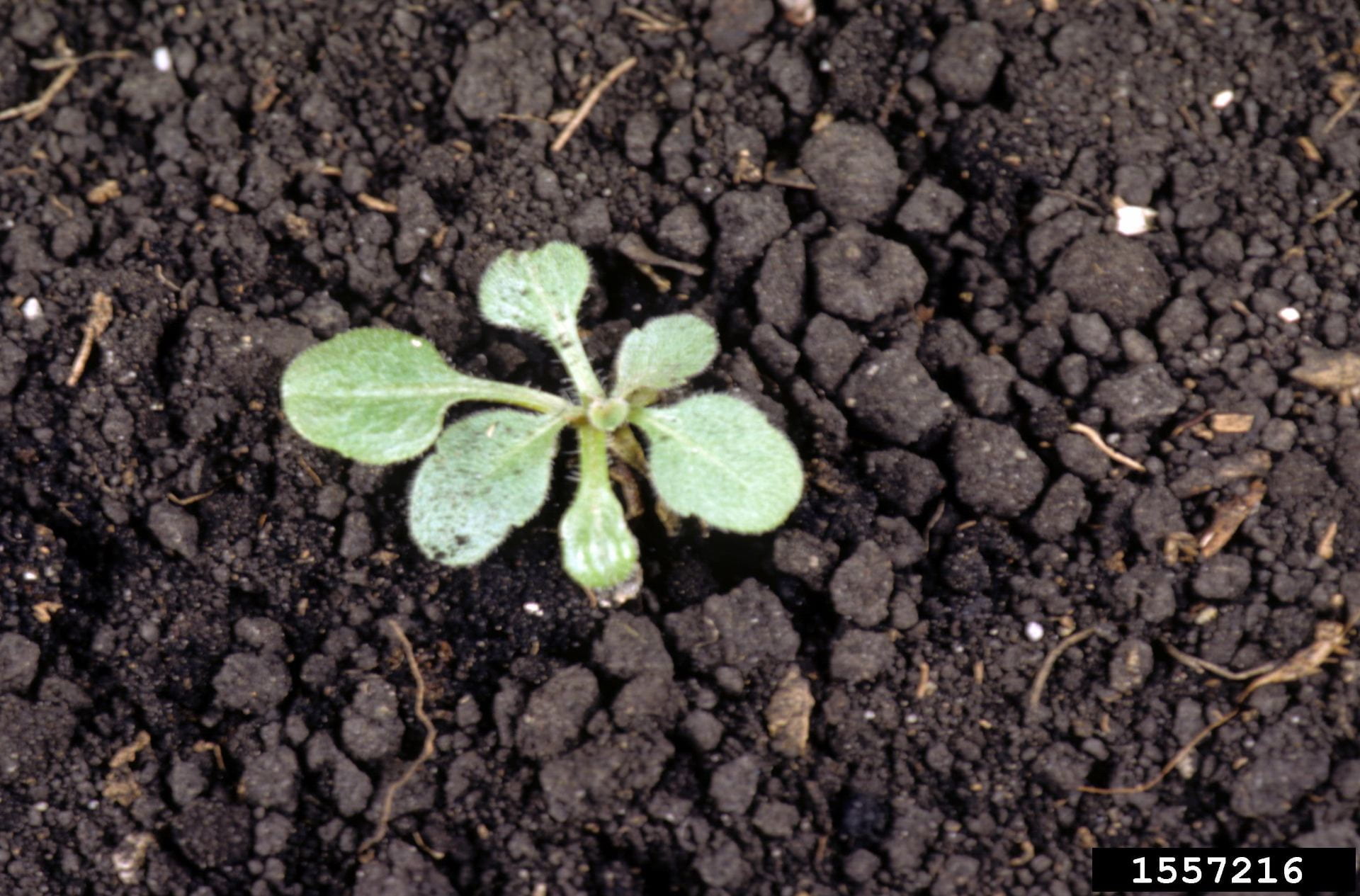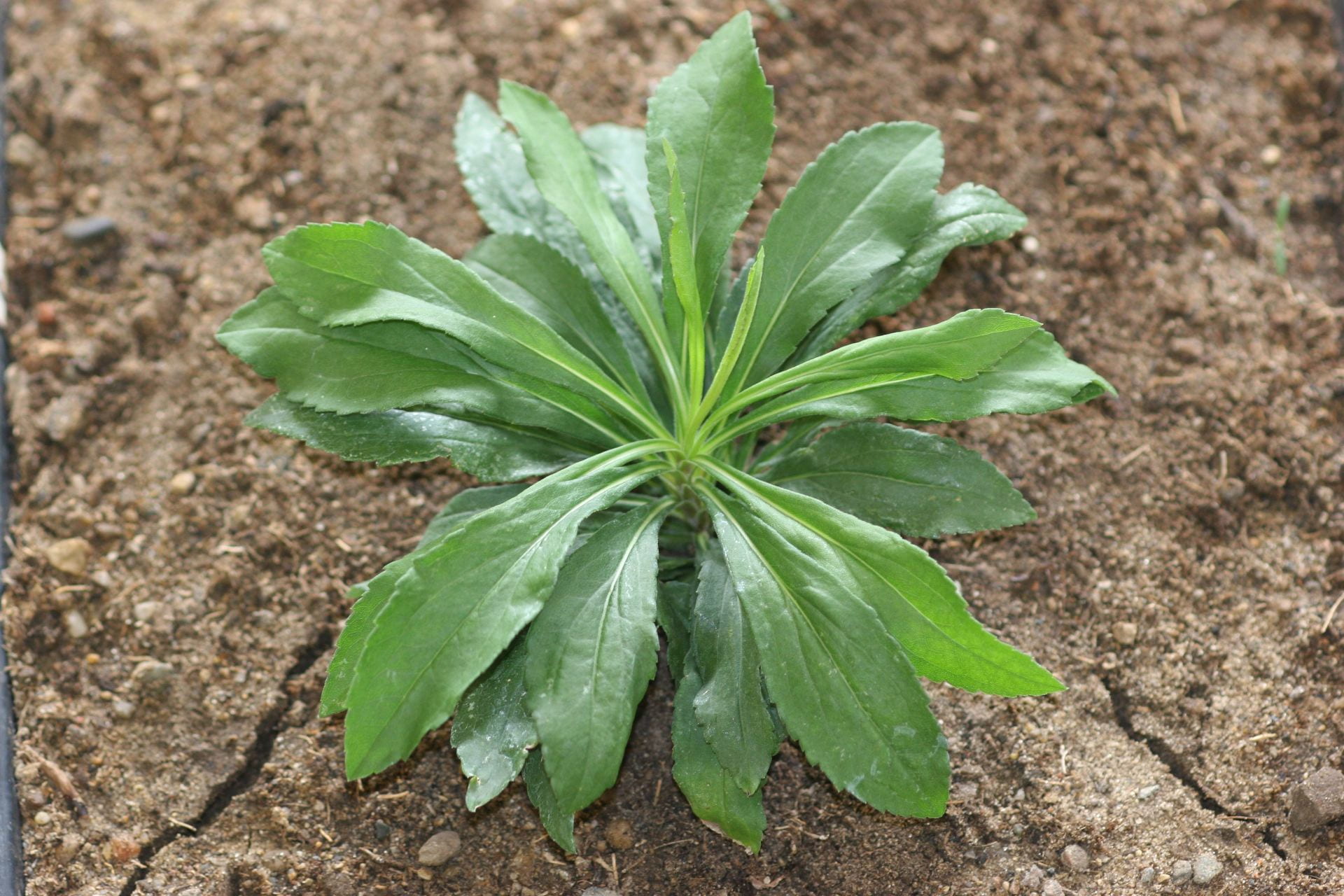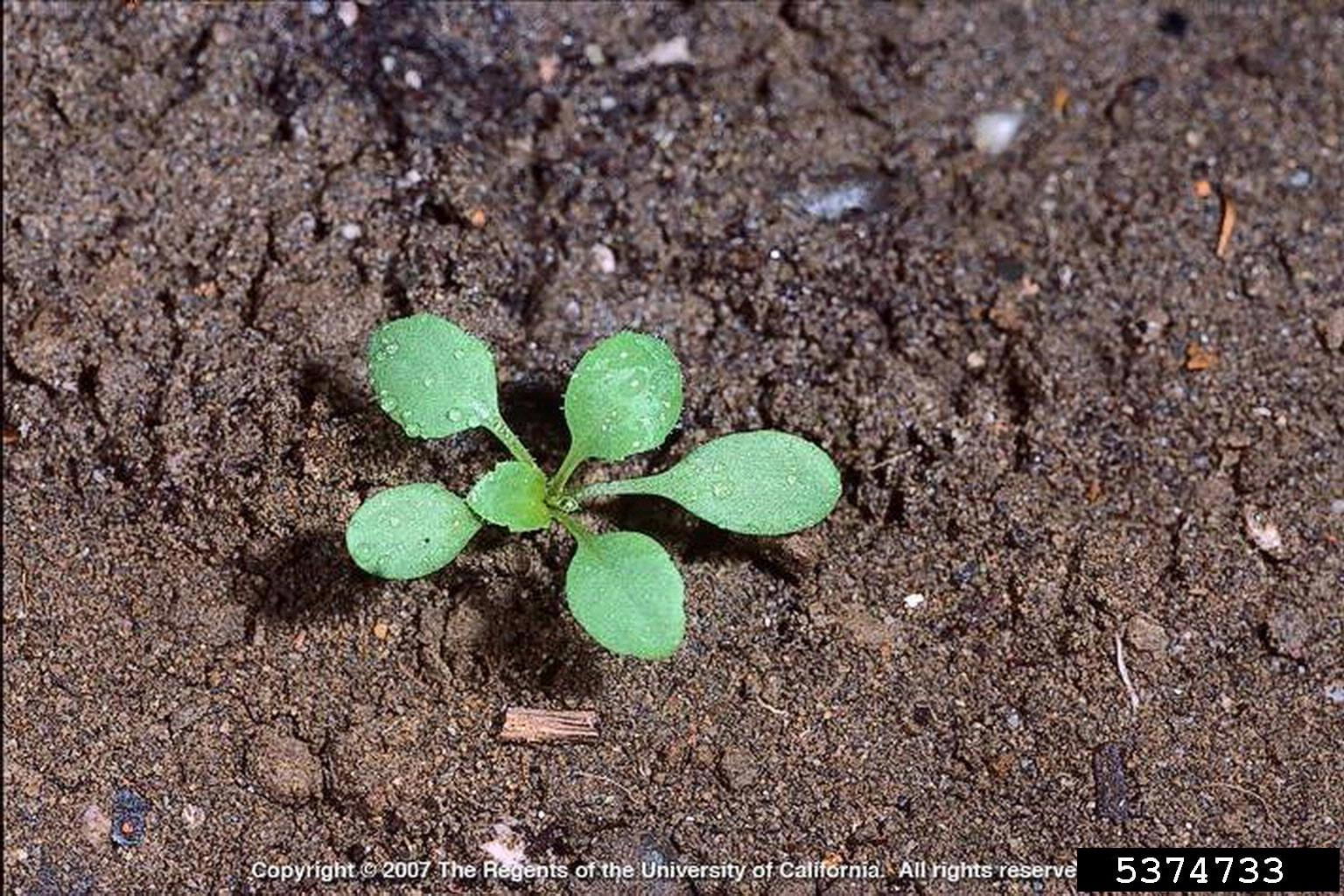Mid-June 2020
CCE Field Crops Specialist Mike Stanyard ran across this weed in winter triticale. It appeared to have been seeded with the triticale, as it was only growing in the row, as tall as the heading out triticale. Scott Morris of the Cornell Weed Ecology and Management lab identified it as common corncockle (Agrostemma githago), a common weed seed contaminant in grain crops. Identifying traits include narrow, opposite leaves with long hairs, and single, purple five-petaled flowers which bloom at the top of a long stalk over the summer. Common corncockle is mildly toxic to humans and livestock when ingested.
This was historically a significant weed of European grain crops, but largely disappeared from its native range due to the advent of herbicides, improvements to seed cleaning technology, and the shift to winter wheat. Herbicide resistance to 2,4-D and MCPA is mentioned in an article from the 1980s on corn cockle competition from eastern Oregon, but the species is not listed in the International Database of Herbicide Resistant Weeds maintained by the Weed Science Society of America. It is listed as a noxious weed in Arkansas and as a plant pest in South Carolina. Common corncockle is also used as a garden plant.
References:
Bugwood.org’s listing for corn cockle: https://www.invasive.org/browse/subinfo.cfm?sub=5049
Wikipedia entry for corn cockle (also corn-cockle, corncockle): https://en.wikipedia.org/wiki/Agrostemma_githago
WSSA International Herbicide-Resistant Weed Database: http://www.weedscience.org/Pages/Species.aspx
Rycrych, DJ 1981. Corn Cockle (Agrostemma githago) competition in winter wheat (Triticum aestivum). Weed Science 29(3) pp. 360-363.
North Carolina Extension Gardener Plant Toolbox: Agrostemma githago: https://plants.ces.ncsu.edu/plants/agrostemma-githago/
USDA PLANTS Database file for common corncockle: https://plants.usda.gov/core/profile?symbol=AGGI



